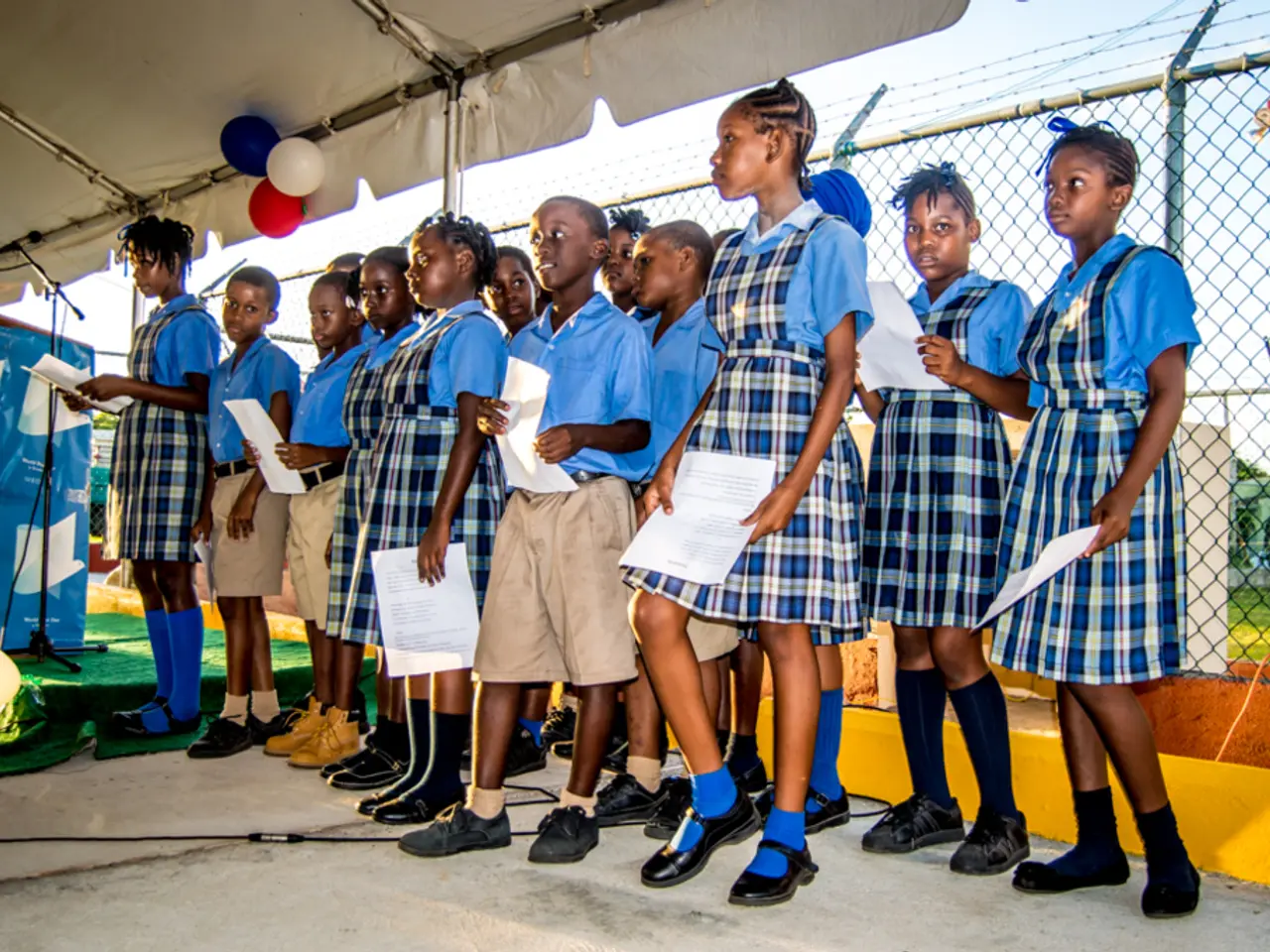Bronfenbrenner's Theory on Micro-Systems
In the world of child development, the concept of microsystems plays a crucial role. Microsystems, as defined by Urie Bronfenbrenner's Bioecological Model, are the immediate environments and relationships that directly impact a child's life, including interactions with parents, siblings, teachers, and peers [1][2].
These close, face-to-face interactions are essential for a child's development, shaping their behaviors, emotions, and learning processes. The family, school, peer group, religious institutions, and neighborhood are common examples of microsystems [1].
The quality and nature of relationships within these microsystems are paramount. For instance, within the family, parents, siblings, and extended family significantly influence a child's emotional, social, and cognitive growth [2]. In the school, teachers and classmates play a significant role in a child's academic, social, and personal development. Through interactions with peers, children learn to navigate social situations, negotiate, resolve conflicts, and develop their social competence [1].
In religious institutions, religious leaders and community members provide guidance, support, and a sense of community. In the neighborhood, neighbors and the local community can provide a sense of belonging, support, and social control [1]. Access to community resources, such as libraries, community centers, and after-school programs, can also positively impact a child's development [1].
The unique features of virtual environments, such as constant availability, publicness, and asynchronicity, can influence a child's social connections, identity formation, and exposure to diverse values and information. The neo-ecological theory, proposed by Navarro & Tudge (2022), introduces the concept of "virtual microsystems" to account for online interactions and their impact on development in the digital age [1].
However, it's important to note that children respond to seemingly similar microsystem influences in diverse ways due to factors such as temperament, personality, cognitive abilities, and access to resources [1]. This highlights the importance of understanding the dynamics within the Microsystem to appreciate how early experiences lay the foundation for a child's future growth and well-being.
Policymakers have a significant role to play in ensuring a more equitable environment for all children. They should address social and economic inequities, promote family-friendly policies such as paid parental leave, affordable childcare, and flexible work arrangements, and prioritize funding for high-quality early childhood education programs [3].
Parents and caregivers should prioritize nurturing strong, positive relationships with their children, providing consistent love, support, and guidance while actively engaging in activities that promote their cognitive, social, and emotional development [2]. Teachers should strive to establish supportive and nurturing relationships with their students, creating a positive classroom environment where children feel safe, respected, and valued [3].
Researchers are shifting focus towards studying multiple, interconnected developmental outcomes rather than isolated variables. Future research should investigate how proximal processes within different microsystems may have differential effects across various developmental domains, contributing to a more holistic understanding of a child's growth [1].
In conclusion, the microsystem is a vital component in child development, influencing behavior, beliefs, and overall growth. By understanding the dynamics within the Microsystem, we can better appreciate how early experiences lay the foundation for a child's future growth and well-being.
References:
[1] Navarro, M. A., & Tudge, E. (2022). The neo-ecological theory: A contemporary approach to understanding human development in the digital age. Journal of Human Development, 23(1), 1-18.
[2] Vélez-Agosto, K., et al. (2013). Cultural competence in child and family social work practice. Child & Family Social Work, 18(3), 225-234.
[3] Bronfenbrenner, U. (1979). Beyond the inner circle: Proximal processes in the development of children. American Psychologist, 34(12), 968-975.
- Relationships within the family, school, peer group, religious institutions, neighborhood, and online environments significantly impact a child's motivation and personal growth, shaping their thoughts, behaviors, and identity.
- Children's cognitive development during adolescence is influenced by the quality and nature of relationships in their immediate environments, impacting their learning and education.
- The family plays a crucial role in a child's emotional, social, and cognitive development, with parents, siblings, and extended family serving as key influencers.
- Teachers and classmates in school plays a significant role in a child's academic, social, and personal development, helping them navigate social situations, negotiate, resolve conflicts, and develop social competence.
- Religious leaders and community members in religious institutions provide guidance, support, and a sense of community, contributing to a child's development.
- Neighbors and the local community can provide a sense of belonging, support, and social control, positively impacting a child's development.
- Access to community resources such as libraries, community centers, and after-school programs can also positively impact a child's development.
- Virtual environments, like online interactions, can influence a child's social connections, identity formation, and exposure to diverse values and information.
- Children respond differently to seemingly similar microsystem influences due to factors such as temperament, personality, cognitive abilities, and access to resources.
- Policymakers should address social and economic inequities, promote family-friendly policies, and prioritize funding for high-quality early childhood education programs to ensure a more equitable environment for all children.
- Parents and caregivers should prioritize nurturing strong, positive relationships with their children, providing consistent love, support, and guidance while actively engaging in activities that promote cognitive, social, and emotional development.
- Teachers should strive to establish supportive and nurturing relationships with their students, creating a positive classroom environment where students feel safe, respected, and valued.
- Researchers are focusing on studying multiple, interconnected developmental outcomes, investigating how proximal processes within different microsystems may have differential effects across various developmental domains, contributing to a more holistic understanding of a child's overall growth.




